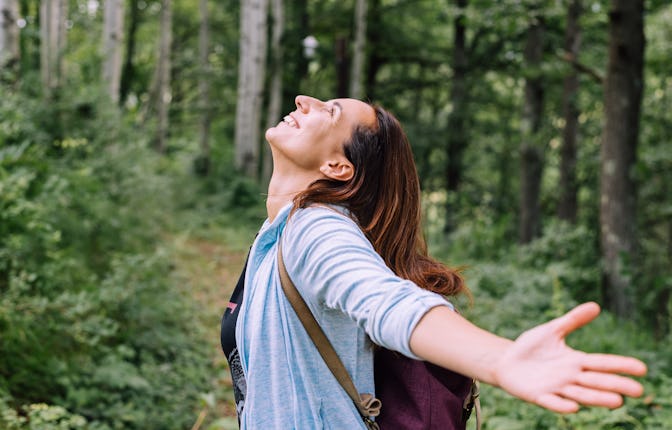These two lifestyle tweaks might actually keep the doctor (and meds) away
Your mind and body will thank you.

At this point, it’s pretty much common knowledge that exercising and staying active is important to maintaining your physical and mental health, especially if you have an office job that keeps you glued to your computer screen — and a chair — all day. But two new studies published in the past week shed new light on specific types of activity you should be doing, and how a couple routine tweaks a day might actually keep the doctor (and the medications) away.
A study published Jan. 13 in the journal Medicine & Science in Sports & Exercise concluded that “activity snacks” throughout the day can help combat some of the negative health effects of prolonged sitting. Among those who participated in the study, individuals who got up and took five-minute walks every 30 minutes had lower blood sugar and lower blood pressure than those who sat for long, uninterrupted periods of time, NBC News reported. One-minute walks every hour also positively impacted blood pressure, though not blood sugar. “When you’re sitting, the blood pools in the legs,” Keith Diaz, the study’s lead author and an associate professor of behavioral medicine at the Columbia University Vagelos College of Physicians and Surgeons, told NBC. “When you regularly activate the muscles in the legs, it helps restore regular blood flow.”
Another study published Jan. 16 in the journal Occupational and Environmental Medicine, meanwhile, suggests you might reap even more benefits if you actually go outside and touch grass. This isn’t some new-age hippie shit, either. For this study, researchers interviewed approximately 6,000 random people in three Finnish cities about their use of green (parks, gardens, forests, cemeteries, moors, natural grasslands, wetlands, and zoos) and blue (lakes, rivers, and the sea) spaces near their homes. The findings: Communing with nature at least three or four times a week was associated with a flurry of health benefits, including 36% lower odds of using blood pressure pills, 33% lower odds of using mental health medications, and 26% lower odds of using asthma medications.
“Physical activity is thought to be the key mediating factor in the health benefits of green spaces when availability or active use of green space are considered,” study co-author and senior researcher at the Finnish Institute for Health and Welfare in Helsinki, told CNN in an email.
It’s important to note, as one expert (who was not directly involved with the study) told CNN that these associations don’t necessarily mean there’s a direct cause-and-effect. “Perhaps people who were healthier to begin with (and less likely to take prescription drugs) were more likely to get outdoors in the first place,” Lincoln Larson, an associate professor in the College of Natural Resources at North Carolina State University in Raleigh who has observed how public parks benefit the well-being of urban residents across the U.S., told CNN.
Then again, multiple other studies have found positive connections between people’s time spent in green spaces and their health — even, in some cases, reducing death rates. I don’t know about you, but that’s enough to convince me to rip myself away from my desk and spend quality time with Mother Nature — emphasis on quality time.
To experience the full benefits of being outside, it’s important to fully immerse yourself. “Just seeing nature didn’t really move the needle, but experiencing it did,” Larson said of his analysis of the new study. “Other research points to similar conclusions.”
Bottom line: While you don’t have to run naked through a field of flowers or begin a daily forest bathing practice to feel fresh, you’ve gotta at least go outside and touch some grass.